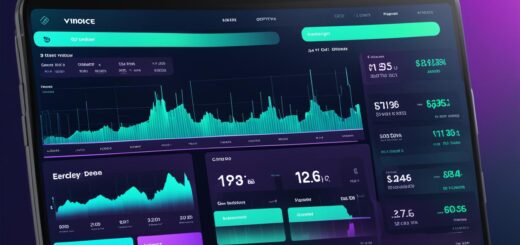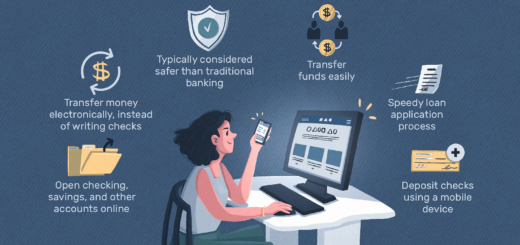Explaining Crypto Mining: A Comprehensive Guide
You’ve probably heard the term “crypto mining” thrown around in conversations or seen it mentioned in news articles, but have you ever wondered what it actually entails? In this comprehensive guide, we’ll demystify the world of crypto mining and break it down into digestible pieces. Whether you’re a beginner looking to grasp the basics or someone with some familiarity wanting to dive deeper, this article will cover everything you need to know about crypto mining and how it works. So, buckle up and get ready to embark on an educational journey through the fascinating realm of crypto mining!
What is Crypto Mining
Crypto mining, short for cryptocurrency mining, is the process of validating transactions and adding them to the blockchain, a decentralized ledger of all cryptocurrency transactions. It is an integral part of how cryptocurrencies operate and ensures the security and integrity of digital currencies.
Understanding Cryptocurrencies
Cryptocurrency Basics
Before delving into crypto mining, it’s essential to grasp the basics of cryptocurrencies. Cryptocurrencies are digital or virtual currencies that use cryptography for security. They function on decentralized networks called blockchains, which rely on consensus algorithms to validate and record transactions.
Cryptocurrency Mining
Cryptocurrency mining is the method through which new coins are created and transactions are confirmed. Miners use powerful computers to solve complex mathematical puzzles, aiming to find a solution that satisfies specific criteria set by the cryptocurrency’s consensus algorithm. By doing so, miners contribute to the security and efficiency of the network.

How Crypto Mining Works
Mining Nodes
Mining nodes are the computers or devices used to mine cryptocurrencies. They participate in the mining process by solving computational puzzles and validating transactions. Mining nodes play a crucial role in maintaining the decentralized nature of cryptocurrencies.
Blockchain Consensus Algorithms
Blockchain consensus algorithms determine how miners reach a consensus on the validity of transactions. The two most common consensus algorithms are Proof of Work (PoW) and Proof of Stake (PoS). PoW is currently the predominant algorithm used in crypto mining.
Proof of Work (PoW)
PoW is the algorithm used in many cryptocurrencies, including Bitcoin. It requires miners to solve complex mathematical puzzles, demonstrating computational work and proving their commitment to the network. Miners with the most computing power have a higher chance of successfully completing the puzzle and earning the newly minted coins as a reward.
Choosing the Right Cryptocurrency to Mine
Factors to Consider
When selecting a cryptocurrency to mine, several factors come into play. These include the current market value of the cryptocurrency, its future potential, the mining difficulty, energy consumption, and the cost and availability of mining hardware.
Popular Mining Cryptocurrencies
Some of the most popular cryptocurrencies for mining include Bitcoin (BTC), Ethereum (ETH), Litecoin (LTC), and Monero (XMR). Each has its unique characteristics and potential for profitability. It is crucial to research and understand the specific requirements and potential returns of each cryptocurrency before deciding which one to mine.

Mining Hardware
ASIC Miners
ASIC (Application-Specific Integrated Circuit) miners are specialized hardware designed solely for mining cryptocurrencies. They are highly efficient and outperform other mining devices in terms of speed and power consumption. ASIC miners are primarily used for mining Bitcoin and other cryptocurrencies that employ PoW algorithms.
GPU Miners
GPU (Graphics Processing Unit) miners utilize powerful graphics cards to carry out mining operations. They offer a more versatile approach, as they can mine various cryptocurrencies. GPU miners are particularly useful for mining Ethereum, which uses a memory-intensive algorithm known as Ethash.
CPU Miners
In the early days of cryptocurrency mining, CPUs (Central Processing Units) were the primary mining tools. Nowadays, they are less commonly used due to their relatively low computational power compared to ASIC and GPU miners. CPU mining is often reserved for cryptocurrencies that employ less computationally intensive algorithms.
Setting Up a Mining Rig
Selecting Hardware Components
To set up a mining rig, you will need to carefully select the necessary hardware components. This includes the mining device (ASIC, GPU, or CPU), a motherboard, power supply unit (PSU), cooling system, and sufficient storage space. Each component should be compatible with each other to ensure successful mining operations.
Assembly and Configuration
Once you have acquired the necessary hardware components, you need to assemble and configure your mining rig. This involves connecting the hardware to the motherboard, installing the operating system, and configuring the mining software. Following manufacturer guidelines and best practices is vital to ensure a stable and efficient mining setup.
Joining a Mining Pool
Pool Mining Basics
Mining pools are groups of miners who combine their computational resources to increase their chances of solving blocks and earning rewards. By joining a mining pool, miners contribute to the collective computing power, and if the pool successfully mines a new block, the rewards are distributed among the participants based on their contributed hash power.
Benefits and Drawbacks
Joining a mining pool offers several advantages, such as a more consistent income stream, reduced variance in rewards, and access to shared expertise. However, drawbacks include the fees charged by the mining pool, the reliance on the pool’s infrastructure, and the potential loss of privacy due to sharing mining statistics.
Choosing a Mining Pool
When selecting a mining pool, various factors should be considered, including the pool’s reputation, the fee structure, the pool’s size and stability, and the payout mechanisms. It is advisable to join a well-established and reputable pool with a sizable user base to ensure a fair and reliable mining experience.
Software for Crypto Mining
Mining Software Overview
Mining software is the tool that facilitates the communication between the mining rig and the cryptocurrency network. It provides the necessary protocols and interfaces to connect to the blockchain and participate in the mining process. Examples of popular mining software include CGMiner, BFGMiner, and NiceHash.
Configuration and Optimization
To maximize mining efficiency, it is crucial to configure and optimize the mining software according to the hardware specifications and chosen cryptocurrency. This involves setting up mining pools, adjusting mining parameters, overclocking or undervolting hardware when applicable, and regularly updating the software to benefit from performance improvements.
Calculating Profitability
Hashrate and Difficulty
The hashrate represents the mining rig’s computational power and is a crucial factor in profitability calculations. Difficulty refers to the level of computational complexity required to solve a block. As the difficulty increases, it becomes more challenging to mine new blocks, potentially impacting profitability.
Electricity Costs
Electricity costs are a significant factor to consider when calculating mining profitability. Given the power-hungry nature of mining rigs, the cost of electricity can heavily impact the net income from mining. Miners should take into account their local electricity rates and the energy efficiency of their mining hardware.
Other Expenses
In addition to electricity costs, other expenses, such as cooling solutions, internet connectivity, and maintenance, should be factored into profitability calculations. These expenses vary depending on individual setups and geography, so it’s essential to accurately assess and account for them.
Online Calculators
To simplify profitability calculations, various online calculators and mining profitability tools are available. These tools take into account factors such as hashrate, electricity costs, and network difficulty to provide estimates of potential earnings. However, it’s important to note that these calculations are only approximations and should be used as a guide rather than absolute guarantees.
Future of Crypto Mining
Evolving Technologies
The field of crypto mining is continuously evolving, with advancements in hardware, software, and algorithms. This includes the development of more efficient mining rigs, improved mining software, and the introduction of new consensus algorithms. Staying informed about emerging technologies is essential for miners seeking to stay competitive.
Shift to Proof of Stake (PoS)
While PoW is the prevalent consensus algorithm used in crypto mining, there is a growing trend towards Proof of Stake (PoS). PoS relies on validators who hold a certain amount of the cryptocurrency to validate transactions and create new blocks. This shift aims to address the environmental concerns and energy inefficiency associated with PoW.
Environmental Concerns
As crypto mining requires a significant amount of computational power and electricity, environmental concerns have arisen regarding its carbon footprint and energy consumption. The industry is actively exploring more sustainable solutions, such as transitioning to PoS or utilizing renewable energy sources for mining operations, to mitigate these concerns.
In summary, crypto mining plays a critical role in the operation of cryptocurrencies, enabling transaction validation and the creation of new coins. Understanding the basics of cryptocurrencies and mining, choosing the right cryptocurrency to mine, selecting appropriate hardware, and optimizing mining operations are all essential steps for successful crypto mining. As the industry continues to evolve and address environmental concerns, keeping abreast of emerging technologies and trends is vital for those involved in crypto mining.

















It's great that you talked about how business insurance can provide financial protection against unexpected events and help ensure the…
I like that you mentioned how business insurance is essential for protecting your bottom line and the long-term viability of…